Editors Note: This article is preparation by contributor Wallace Wyss for a book tentatively entitled How Tesla Killed Detroit. Reader comments are welcomed.
Mike Gulett
by Wallace Wyss –
There are a lot of parallels between the first Henry Ford and Elon Musk. They are both being recognized as auto industry pioneers. Ford for envisioning the assembly line, and Musk for inventing the gigafactory basically a highly automated factory capable of higher production numbers than ever thought possible.
If you look at the history of Ford it was a company brilliantly started off by Henry Ford in the early 1900s. It actually had several starts and one time was funded by the Dodge Bros. Henry Ford even tied in with the resident genius of the time–Thomas Edison and made a car called the Edison Electric, with batteries under the seat. The first two could make somewhere between 50 and 100 miles on a single charge. The plan was to establish a Detroit-based facility to produce the first Ford EV for introduction in 1915.
When, like electric cars, because the fearsome hand-crank used to start ICE cars were dangerous and EVs were free of foul-smelling emissions. Reportedly Henry Ford’s wife Clara, liked her 1914 Detroit Electric.
The Electric Self-Starter for the Internal Combustion Engine
But interest died off suddenly when an inventor invented the electric self-starter Ford didn’t bat an eye. By that time he had invented the Model T. He didn’t mind when the Dodge Brothers and others went on to build more luxurious cars, his goal was to make a car available to everyman. He wanted it to be the cheapest car–under $500 –and offered it “any color so long as it’s black.”
He sold several million, and even lowered the price as he went along. It was every American driving family’s first car.
But eventually Henry Ford’s brilliant reputation seemed to fade, as he stuck with the Model T too long while the other Detroit automakers upgraded their styling, and introduced new engines, every three or four years. Finally Henry Ford brought out the Model A (with a V8 option) but it didn’t re-shape the American car market as much as the Model T had.
Ford stuck relentlessly to the water cooled engine, not going for air cooled as GM did with the Corvair. They also eschewed radical ideas like the gas turbine engine (which Chrysler built 50 of, leasing but not selling them) Ford was even very slow to accept front wheel drive cars and that was only reluctantly after the Japanese did in the ‘60s.
Ford Management Change
After the original Henry Ford died, the company never again came up with a winning formula that would dominate the Big Three. One could say that they did make a lasting mark on the industry by developing the minivan but Henry Ford II, the patriarch of the firm and the original Henry’s grandson, rejected it and a employee that left took the idea to Chrysler which scored a big hit with it. Ford only reluctantly got into small cars with the Pinto, but they hated small cars; the money was always in more expensive cars.
The Ford family had one more brilliant thinker. In the ’30s, Edsel, who among other ideas invented the Continental, a one off car with great taste which became a production car.
The difference between Ford and the other two of the Big Three was that for decades they were a family owned firm and could make decisions without worrying about stockholders. Henry Ford II at one time in the ’60s decided he wanted Ford to win this 24 hour race in France and was vindicated when Ford won, not once but four times in a row.
Ford also contributed the idea of the “muscle car,” a shorter wheelbase four seater that had sports car performance and inspired enthusiasts. Henry Ford II also brought Italian design into the marketing of cars sold in America. While Chrysler had occasionally consulted Ghia, the same coachbuilder, in the ‘50s, and GM had a few Cadillacs built in Italy by a rival firm Pininfarina, none of the others of the Big Three went so far as to establish an Italian design studio.
But mechanically, innovation was not Ford’s bailiwick. In 1960, when GM imitated VW’s beetle with a rear engine, air cooled car, Ford did not follow suit. When GM spent millions trying to field their own Wankel rotary engine in imitation of the Mazda, (only to pull back at the brink, not comfortable with the idea of paying a per-engine royalty) Ford stuck to front engine water cooled engines.
Ford did pioneer an off road capable vehicle. Few remember that, during WWII they saved the day when Willys, who invented the Jeep, couldn’t make them fast enough and it was Ford’s version that largely fought the war. Decades later Ford came out with the Bronco and that started a new subgroup of American cars–the four wheeler, many running four wheel drive.
Ford Pickup Trucks
Ford also succeeded beyond their wildest dreams with the pickup truck–especially the F150. At the time of this writing that was still their best selling internal combustion vehicle. When the electric revolution came along, Ford entered the field timidly, almost reluctantly. When GM fielded the EV1, Ford did not follow suit, convinced electrics would have no followers.
California is a big market for Ford. Once California reaffirmed its California zero-emissions mandates in 1996, Ford got its marching orders–they were required to produce and sell at least several thousand electric cars by 2003. The company responded with two electric vehicles: the Think City microcar and the Ford Ranger EV pickup. The Think was a ready made car already in production, so, in 1999, Ford Motor Co. plunked down $23 million to buy Think Global – a Norway-based company that had been developing a cute little plastic-bodied EV since 1991. After investing another $100 million in battery development, Ford in Nov. 1999 jumped into production of the Think City.
The two-seater offered about 53 miles of range and a top speed of only 55 miles per hour. Ford also thought of the commercial market–creating the Think Neighbor, a golf-cart-like all-electric utility vehicle with a top speed of 25 miles per hour. The City was offered in a 34-month lease for $199 a month. Ford had hoped to lease about 5,000 Think City cars but mustered up only about 1,000 customers. In August 2002, Ford Motor Co. put its Think division up for sale.
An All-Electric Ford Pickup
With all the fuss about the GM Silverado pickup coming and the Ford F150 electric it’s forgotten that in the late-1990s Ford announced the all-electric Ranger EV, a compact pickup produced with engineering support from Think. The Ranger EV was built from 1998 to 2002 – the same era of General Motors’s EV1.
Ford’s electric pickup was a conversion from the ICE powered four-cylinder Ford Ranger XL 4X2 Regular Cab. They were equipped with AM/FM radios, bench or bucket seats, and seating for two or three passengers. The nominal sticker price was a shocking $52,720, but Ford leasing supported an affordable three-year lease program that ended up seeing them mostly going into government fleets.
The Ranger EV used lead-acid batteries in the first year of production before switching to nickel metal hydride. The 26 kilowatt-hour nickel-based battery packs provided about 80 miles of range. It was a steep learning curve. The electric pickup was plagued with quality problems including losing range after about 25,000 miles of use.
Soon after California weakened its ZEV mandates in 2003, Ford terminated the Ranger EV leases. Only 1,500 Ranger EV trucks were made over four years. Most of them were taken back by Ford and subsequently destroyed, echoing of GM’s torching of the EV-1.
The Electric Vehicle Mandate
In the wake of the 2008 financial crisis, Ford saw the writing on the wall of the Obama Administration. They unveiled its Focus Electric at the 2009 Frankfurt Motor Show. Using the Focus platform was a logical choice. Auto critics consistently pointed to the Focus as one of the most attractive small cars on the road. The EV went into production by 2011, and used a 23 kilowatt-hour battery pack officially rated to provide 76 miles of range.
The idea was to not make it weird looking but a pure EV that looked and drove like a so-called normal car. The 134-horsepower motor provided acceptable acceleration. The liquid-cooled battery management system ensured consistent year-round range and battery life.
The big drawback with the Ford Focus Electric was virtually no cargo space. As an ICE car converted to run on electricity, the main battery pack was packaged under the liftgate gobbling up cargo space by 39 percent, leaving just 14.5 cubic feet.
The Focus Electric’s initial starting price was expensive–$39,995 before incentives. Way too high it turned out compared to a ICE Focus.
Ford in 2013 Ford dropped the price by $4,000 and offered a $6,000 dealership incentive, reducing the net price to $29,200. By the next year, that became the standard price. Ford hated making the car. They lost money. Even before it went on sale, Ford CEO Alan Mulally was downplaying the viability of EVs. “The infrastructure is just not there yet,” Mulally told Newsweek, “These are very expensive vehicles because the batteries and electronics are very expensive.”
Back then electric cars were so rare the range wasn’t what scared buyers off but Ford increased the size of the battery in 2017 to 33.5 kilowatt-hours – expanding its range to 115 miles. But it was a loser from the word “go”, Ford sold about 9,300 units before the company killed it off in April 2018.
Use The Mustang Name to Sell Electric Vehicles
They did manage to get an electric SUV introduced in 2021–the Mustang Mach E–which was well along in its gestation as an SUV when CEO and car enthusiast Jim Farley insisted it be called the Mustang Mach E and used the styling of their muscle car, the Mustang. It sold well, so well that it boosted Ford’s stock value (though nothing like Tesla). In 2022 they were preparing to introduce a pickup truck EV called the Lightning and had hundreds of thousands of orders.
But two things happened to crimp Ford’s plans, the same old Detroit problem—lack of key parts, in this case the chips that are the brains for the computer. Tesla also suffered chip shortages but had more suppliers and were still able to make at least 300,000 cars per year at each of their two operating factories–California and China.
Tesla had less trouble completing cars during the chip shortage because of their strong belief in the principle of vertical integration–you control where the parts come from, keeping as much of the job in house that you can. That was exactly the same as the first Henry Ford did–taking in raw ore on one side of the River Rouge from ships arriving from Lake Superior and having finished cars rolling out of the factory little more than a day later.
Organization Change
In 2022, Farley finally at some point, realized you can’t have two cooks in the same kitchen, one cooking meat, the other fish, and still expect them to get along so in 2022 he announced Ford was splitting into two distinct businesses one for fossil-fuel cars (“Ford Blue”) and the other for electric vehicles (Model E). He downplayed any thought of spinning off a separate company, this would be within Ford. Though the thought of splitting off an EV business was tempting if they could issue its own stock.
A phrase Farley used was “startup speed”. For the race against both established automakers and the new crop of new competitors, he even generously named who their targets were — a Chinese startup Nio (NIO) and the by then firmly established EV world leader Tesla (TSLA).
A third leg was designated to deal with commercial products and services. Ford in the last century was keen on alphabetical names like Model T and Model A so Farley was able to copyright Ford Model E for Ford’s scale electric vehicles, supposedly beating Tesla for use of the name. Going in to 2022, Ford already had two stars, one the Mustang Mach-E and the upcoming F-150 Lightning, the electric version of its top-selling line of pickup trucks, which already had hundreds of thousands of orders.
Farley sought to reassure Ford stockholders that there would still be new generations at Ford Blue of internal combustion engine vehicles including F-Series, Ranger and new Maverick trucks, as well as the Bronco and Explorer SUVs, and Mustang cars.
Why did he separate them? Because the more he tried to lay out the electric vehicle plants the more he saw how useless most of the equipment used to make ICE cars was in a plant building electric from the ground up. In his 2022 announcement Farley admitted those two businesses require “different approaches, talents and, ultimately, organizations.”
Bloomberg, a business reporting outlet, speculated that Ford planned to spin off its EV or ICE businesses. It is tempting because the rise of Tesla stock made Tesla the largest automaker in terms of market capitalization, so Ford and GM were both tempted to separate their emerging EV businesses, in order to unlock pure-play value. If the stock went up fast, they would have a lot more money to invest in the new direction than if these entities stayed under Ford label.
As proof that the public (especially those who missed out on the meteoric rise in Tesla stock) were eager to invest in EV start-ups, both Lucid (LCID) and Rivian (RIVN) briefly surpassing Ford in market value. Alas, it was only for a short time. By early 2022, each of these wanna-bes had only made a few cars, numbered in hundreds. In the same amount of time Tesla had made 500,000 EVs or more out of their Fremont, CA and Shanghai China plants.
In 2022 Ford announced that they would double EV spending saying by 2026 they expected EVs to make up a third of Ford’s global volumes and four years after that, Ford promised, EVs would be half of all Fords made.
In the beginning of 2022, Ford kept upping the expenditures they planned to make on EVs, first 22 billion and then promising $30 billion by 2025. The Mustang Mach E was their first EV superstar. Mustang Mach-E sales totaled 27,140 vehicles in 2021, making it the nation’s second best-selling full electric SUV behind Tesla’s Model Y, which in the same time sold hundreds of thousands of units.
The chip shortage crimped their plans–sales of the new Mach-E, a would be competitor to the Tesla Model 3 or Y, were almost halved, because of a production halt due to the chip crisis.
A savior waiting in the wings is the F150 Lightning pickup–admittedly a far more conventional pickup than Tesla’s unorthodox Cybertruck. In many ways it won’t be as novel as the Cybertruck (which is lately promising four wheel steering) but the difference will be in whoever gets their EV truck out onto the market first. If Ford can beat Tesla to market by just one year they will establish a name for themselves in the EV pickup niche. Ironically Tesla can’t stop production of any of their four models–three sedans and a crossover–to squeeze in the Cybertruck. They have too many back orders.
Summary
For those who think “Well, it’s the end for Tesla–more highly styled cars will come from the Big Three, and…” one has only to go back to the word exponential. The Cambridge dictionary defines it as “An exponential rate of increase becomes quicker and quicker as the thing that increases becomes larger.”
In 2022, Ford’s CEO was estimating percentage of Ford EVs that will be in the market in the years 2025 or 2030. But all he has to do is take out an adding machine and type in how many cars a year Tesla makes and is making:
* 2019 — 365,232
* 2020 — 509,737
* First two quarters of 2021 — 386,759
And that’s with only two plants, Shanghai and Fremont. By the end of 2022, Tesla will have Berlin and Austin. By 2025, it is not outlandish to think Tesla can make 2,000,000 EVs a year. When all four plants are operating 24 hours a day full capacity, a new Tesla will be born into the world every 45 seconds. Ford started too late.
They can never catch up….
Let us know what you think in the Comments.
THE AUTHOR: Wallace Wyss, who has guest-lectured on design at Art Center College of Design, delivers commentary on new cars on Autotalk, a show broadcast weekly from KUCR FM radio Riverside.
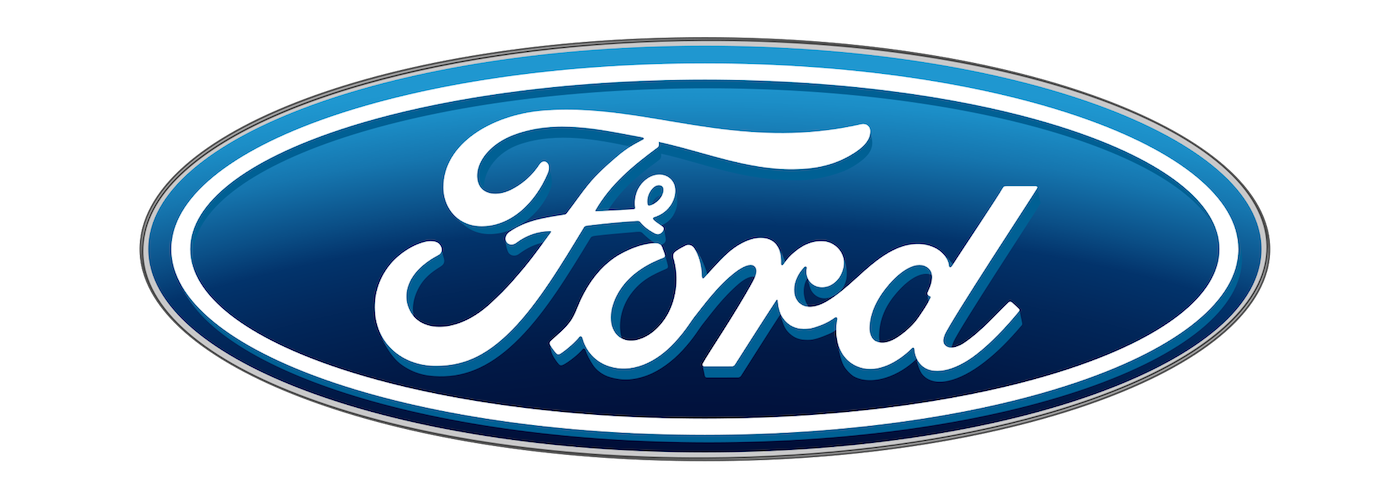
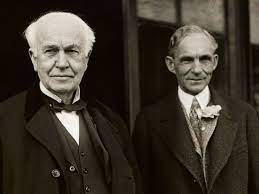
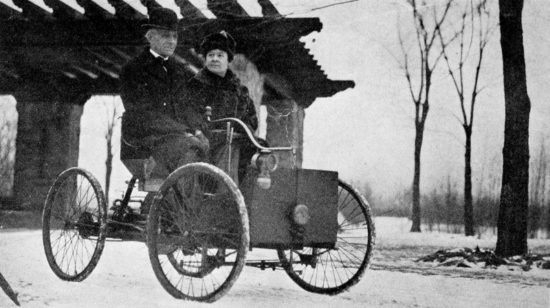
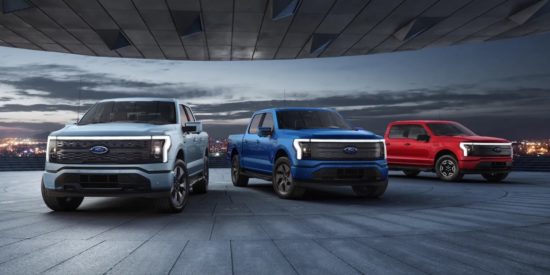
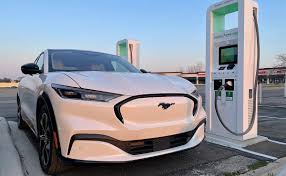
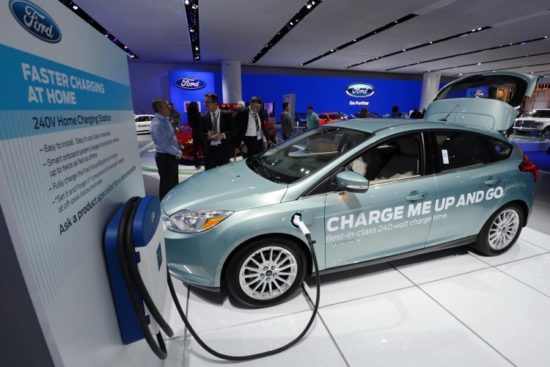
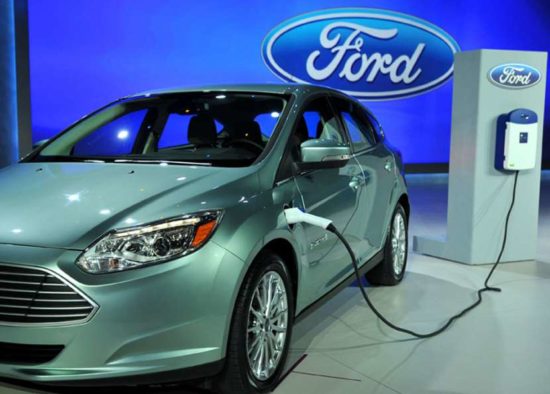
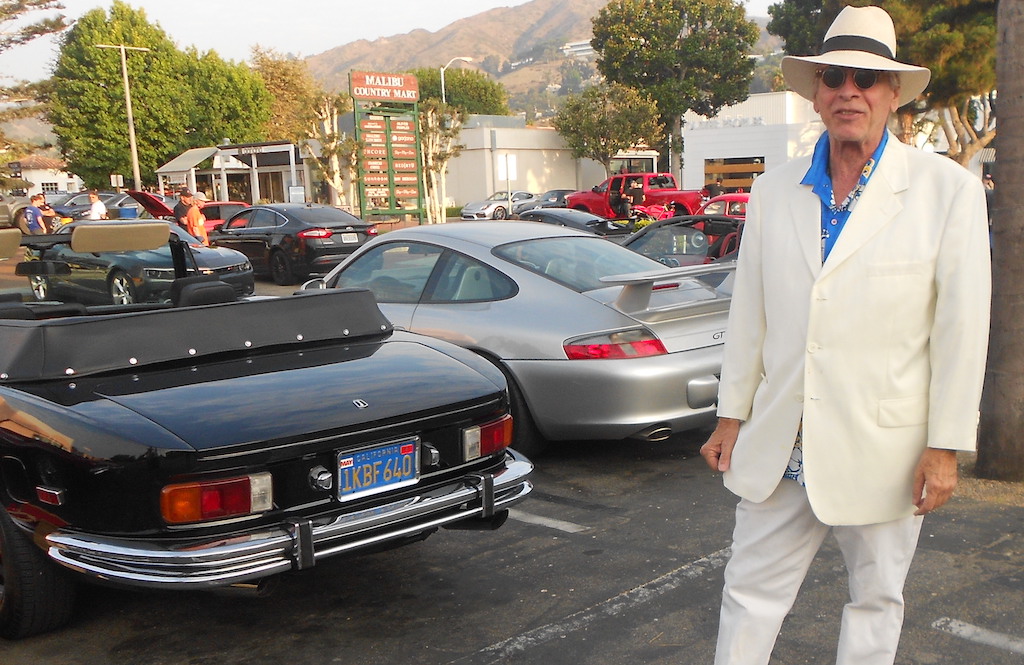
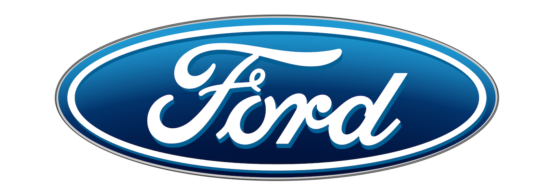


I’m surprised that you did not know that the Ford Model A only offered a four cylinder engine. The four cylinder was
offered along with a V8, not in the Model A, but in the Model B in 1932A after the end of the Model A in 1931.
Thank for catching that. I should know. My pa built ’em at the Rouge